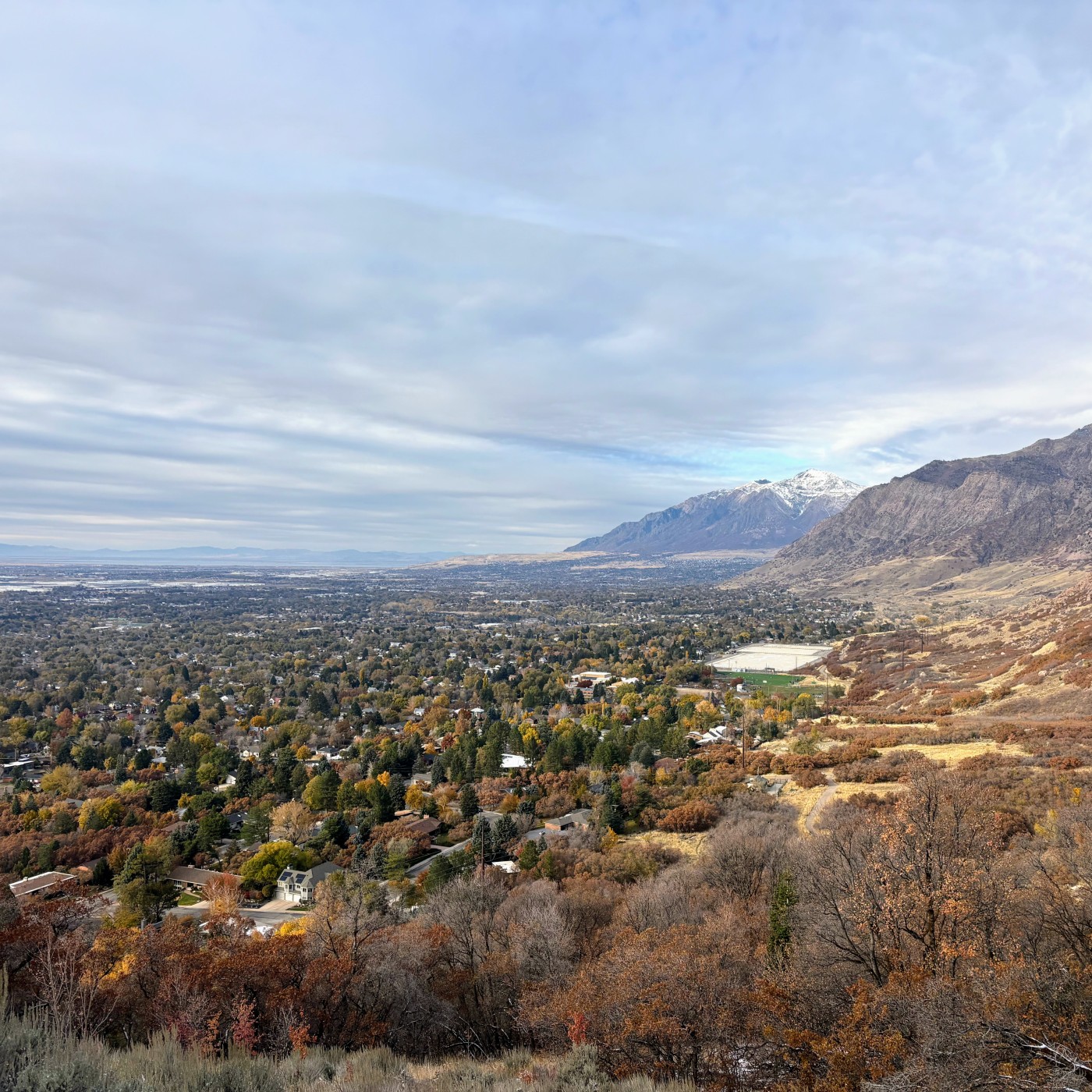Written by: Abbey Soukup, AmeriCorp Intern
It’s no secret that Utah is beaUTAHful. The mountains are known worldwide! However, this beauty hosts a problem: smog. Utah has a unique mountain range that creates a perfect environment for inversions. While you are in the valleys it may be hard to recognize smog around you, but looking in from a distance, it is common to see a hazy layer of smog constricting our cities.
Several mountain ranges, including the WasatchRange to the east and the Oquirrh Mountains to the west surround Utah. These mountains create natural barriers that can trap air in the valleys. Major population centers are in valleys, such as Salt Lake City or Ogden. These valleys are perfect pockets for air to get trapped in. So how do inversions work? Normally, air temperature decreases with altitude. This allows for vertical mixing of air, helping the dispersing of pollutants. An inversion is a layer of warm air that traps cooler air below, blocking the vertical mixing of air. The warm air acts like a lid, creating a stable air mass. Inversions can happen due to several reasons as well as any season. Our long nights and snow-covered winters have key elements for creating an effortless conversion, such as radiational cooling at night (where the ground loses heat quickly), cooling the air close to the surface, while the air above remains warmer. This warm air lid traps any pollutants emitted from vehicles, residential heating, or industries, near the ground. With little wind or weather systems, in combination of our mountainous barriers, this limits the ability to break the inversion and the air to become heavily polluted.
Air quality refers to the condition of the air within our environment, particularly concerning the presence of harmful pollutants. Winter inversions can lower air quality conditions due to the trapped pollutants. One of the key pollutants to be aware of is PM2.5. PM2.5 stands for particulate matter less than 2.5 micrometers in diameter. These tiny particles can penetrate deep into the respiratory system and even the bloodstream, leading to various health issues. PM2.5 is often produced by sources like vehicle emissions, industrial processes, and the burning of fossil fuels. Healthy air is critical to us, as we breathe 12 times a minute, or 17,000 times a day. Our healthy standard for air quality is 35 μg/m3 per day, or 9 μg/m3 per year. I’ll do the math: 17,000 x 35 = 595,000. That’s a lot of toxic particulate matter to breathe in just one day.
The accumulation of pollutants can lead to health issues, particularly for vulnerable populations such as those with respiratory conditions, children, and the elderly. Those with asthma and COPD can have exacerbated problems with higher concentrations of PM2.5. Long-term exposure is linked to serious health conditions including cardiovascular diseases and premature mortality. Poor air quality affects animals in the same way. Pets and wildlife are at risk during inversions. Plants can also be affected, with the deposition of harmful substances on the plants themselves, hindering photosynthesis. Pollutants can settle into bodies of water as well, contaminating water sources, and disrupting the entire ecosystem.
The buildings at the Ogden Nature Center help combat poor air quality! The education building features a cooling tower and 199 solar panels. The solar panels provide enough energy to power the entire property. Solar power reduces the amount of fossil fuels burned to keep the buildings cool in the summer and warm in the winter. The cooling towers act as a“chimney” that draws warm air up and pulls cool air through the building. This allows the Nature Center to use less energy to cool the building in the summer heat. The Visitor Center also features a cooling tower, and a living sod roof to reduce heat absorption. Living sod roofs use the plants to act as insulation. This reduces the heat in summer as well as heat loss in winter. Another added benefit is a reduction of roof surface temperatures, as well as the absorption of carbon dioxide and the release of oxygen.
What can you do to minimize pollution in the air? The first step is to be aware of the air! The Ogden Nature Center has a PurpleAir monitor located on the L.S. Peery Education Building. This monitor screens the air quality and updates live statuses. Check out the PurpleAir sensor map to get an idea of the air quality around you! Some simple steps to lower your pollution output include turning off lights (or installing motion sensor lights and energy efficient bulbs), turning the thermostat down a notch or two, unplugging any unused items to prevent phantom power, carpooling, using public transportation, or walking, avoid idling, switching to renewable energy sources, and supporting sustainable products. There are many other ways to breathe clean. Become a citizen scientist with PurpleAir and check out their blog for more information.

















